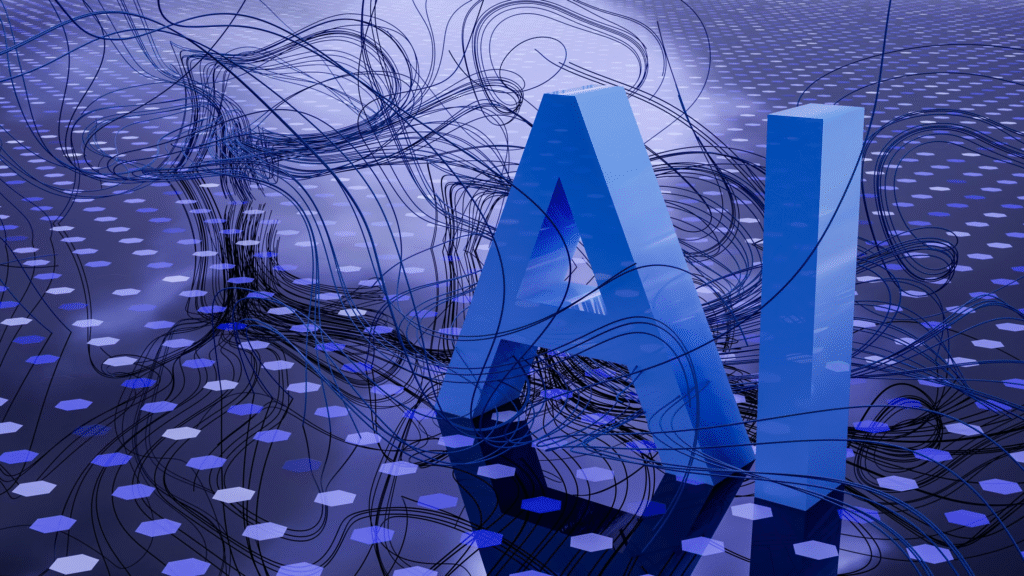In recent months, artificial intelligence has been the shining star of the U.S. stock market. Big companies connected to AI technologyTech Influencer ‑ Made with FlexClip, from chip makers to software firms, saw their share prices rise at an unbelievable pace. Many investors rushed in, hoping to ride the wave of AI excitement and profit from what seemed like a never-ending climb. But this week showed that even the strongest stories in the stock market are not safe from setbacks. Technology shares, especially those tied to artificial intelligence, stumbled sharply and reminded investors that big gains can quickly be followed by big drops.
The sudden fall in technology stocks did not come as a complete surprise. After all, markets usually move in cycles, and when a sector becomes too “crowded” with investors, the smallest hint of worry can trigger a pullback. Keith Lerner, co-chief investment officer at Truist Advisory Services, explained this clearly when he said, “When you have overcrowding and you have had such strong performance, it doesn’t take much to see an unwind of that.” His words reflect the reality that many investors may have put too much money into AI stocks too quickly, creating conditions for a sudden reversal.
Another important reason for the caution is the calendar. Historically, late summer is often a tough time for markets. Investors sometimes use this period to reduce risks, take some profits off the table, and wait for clearer signals from the economy and the U.S. central bank. This year is no different. With so much money made from AI stocks already, many funds and individual investors decided it might be smarter to protect their profits rather than risk losing them in a downturn.

A major event hanging over the markets this week is the upcoming speech by Federal Reserve Chair Jerome Powell. Each year, top policymakers and economists gather in Jackson Hole, Wyoming, for an important meeting where they discuss the state of the global economy. Powell’s speech, scheduled for Friday, is being watched very closely. Many investors expect him to give hints that the central bank is ready to cut interest rates soon. If he fails to meet those expectations, or if his tone suggests a delay, the market could face more turbulence. Investors remember well that words from the Fed often move markets more than any company’s earnings report.
The reaction to these concerns was visible in the performance of key indexes. The technology-heavy Nasdaq Composite dropped around 2% for the week, and the S&P 500 technology sector was down about 2.5%. These declines may not sound catastrophic, but they are significant given the huge gains that tech and AI stocks had enjoyed earlier in the year. The fall was sharp enough to shake the confidence of some traders who believed AI stocks could only go up.
High-profile companies were hit especially hard. Nvidia, a leading chipmaker whose processors power many AI systems, saw its shares decline. Palantir Technologies, another firm that has been popular among AI enthusiasts, also suffered notable losses. These companies had become symbols of the AI boom, so their struggles sent a strong message across Wall Street. The message was clear: no matter how exciting AI is, stock prices cannot rise forever without pauses or corrections along the way.
The deeper question now is whether this is simply a short-term pullback or the beginning of a longer cooling period for AI-related shares. Optimists argue that the underlying story of artificial intelligence is still very strong. They point out that AI is being used in healthcare, finance, education, and nearly every industry imaginable. In their view, the recent stumble is nothing more than a temporary “breather” after a long sprint. Pessimists, on the other hand, worry that too much future growth has already been priced into these stocks. They believe investors may have become too hopeful too quickly, and that disappointment could follow if AI technology takes longer than expected to deliver real profits.
Interestingly, while technology struggled, other sectors of the stock market performed better. This shift shows that investors are not leaving the market altogether, but rather moving their money around. Instead of chasing AI stocks at very high prices, they are exploring opportunities in industries that had been ignored. This kind of rotation is common in markets and reflects the constant search for balance between risk and reward.
For ordinary people watching the market, the story carries an important lesson. Exciting new technologies like artificial intelligence can create opportunities, but they also carry risks. When everyone is talking about one sector, and when prices have already gone up a lot, that is often the time when caution is most necessary. The events of this week are a reminder that patience and careful thinking are just as important in investing as excitement and optimism.
As the week continues, all eyes remain on Jerome Powell’s speech at Jackson Hole. Investors are eager to see whether the Fed signals an easier policy with lower interest rates, which would support stock prices, or whether caution about inflation and the economy keeps rates higher for longer. Whichever way the speech goes, it is clear that artificial intelligence will remain in the spotlight. The technology is too transformative to ignore, but its path in the stock market will not be smooth or guaranteed.
In the end, the stumble in AI stocks is not necessarily the end of the story. It may simply be the market’s way of reminding investors that success comes with challenges, and that even the most powerful trends need time to prove their value. As Keith Lerner wisely noted, strong performance can attract too many investors, and when that happens, it doesn’t take much to shake confidence. For those who believe in AI’s future, this moment may be just another chapter in a much longer journey. But for those who thought AI stocks could only rise, it is a wake-up call to respect the ups and downs of the market.


